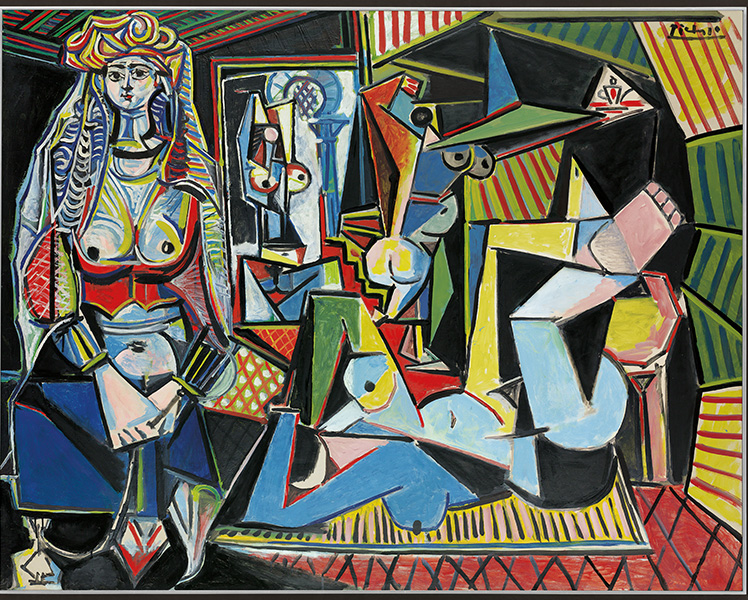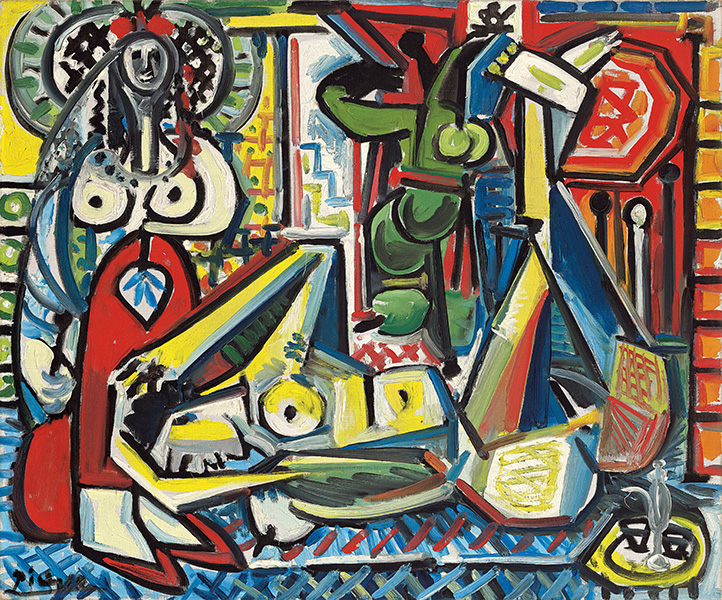For Picasso, like Delacroix, the beauty and torments of Algeria
The Algerian War (1954-1962) marked a turning point in contemporary French and Algerian history. In 1954, Algeria was divided into three French departments. The territory had been part of France for one hundred and thirty years and the French government rejected any form of secession. However, Algerian Muslims were not full citizens: they had been voting in a separate electoral district from that of Europeans since 1947. The principle of equality —one man, one vote— was not observed. A growing number of Muslim Algerians supported the idea of independence. The tensions between the two countries were evident. Tunisia and Morocco, both on the verge of a general uprising for the past three years, were leaning towards autonomy; only Algeria appeared to remain calm. However, on the night of October 31 to November 1, 1954, explosions, fires, disturbances, and attacks on police stations were reported in different locations, all claimed by the FLN (National Liberation Front): the war in Algeria had begun.[1] Despite the post-World War II upswing in growth and economic success that had allowed the French to lead a decent life again after the dark, difficult years (although many did not benefit from the improvements, leading to historical social conflicts), and despite the reconstruction of the country and decolonization, the prevailing atmosphere and the governments' instability weighed heavily on the country. Picasso, who never seemed to decide what he would paint the next day ("If you know exactly what you're going to do, why bother doing it?"[2]) was inspired by both the beauty and the suffering around him and by the partisan turmoil of his time.
It was in this particular context that Picasso produced his series of Variations on paintings by great masters. Several art historians have drawn a clear connection between the events unfolding in Algeria and the Variations on the works of Delacroix, even though the artist never made any public statement to that effect.[3] He tackled Delacroix's works along with those of Velázquez and Manet. The result was the series that comprised the fifteen Femmes d'Alger, followed by the Meninas after Velázquez in 1957, and later by Le Déjeuner sur l’herbe after Manet (from 1959 to 1961). He produced paintings, which he conceived as an ensemble, and numerous preparatory drawings.
[1] See the article by Benjamin Stora, "Guerre d'Algérie" in Encyclopædia Universalis [s.d.]. Available at: https://www.universalis-edu.com/encyclopedie/guerre-d-algerie/.
[2] Conversation with Christian Zervos, Cahiers d’art, 1935.
[3] On this subject, see the article by Amanda Beresford, Washington University in St. Louis, Picasso’s Les Femmes d’Alger series (1954-55) and the Algerian War of Independence, The Journal of the Western Society for French History, 2015, available online.






 Summary
Summary